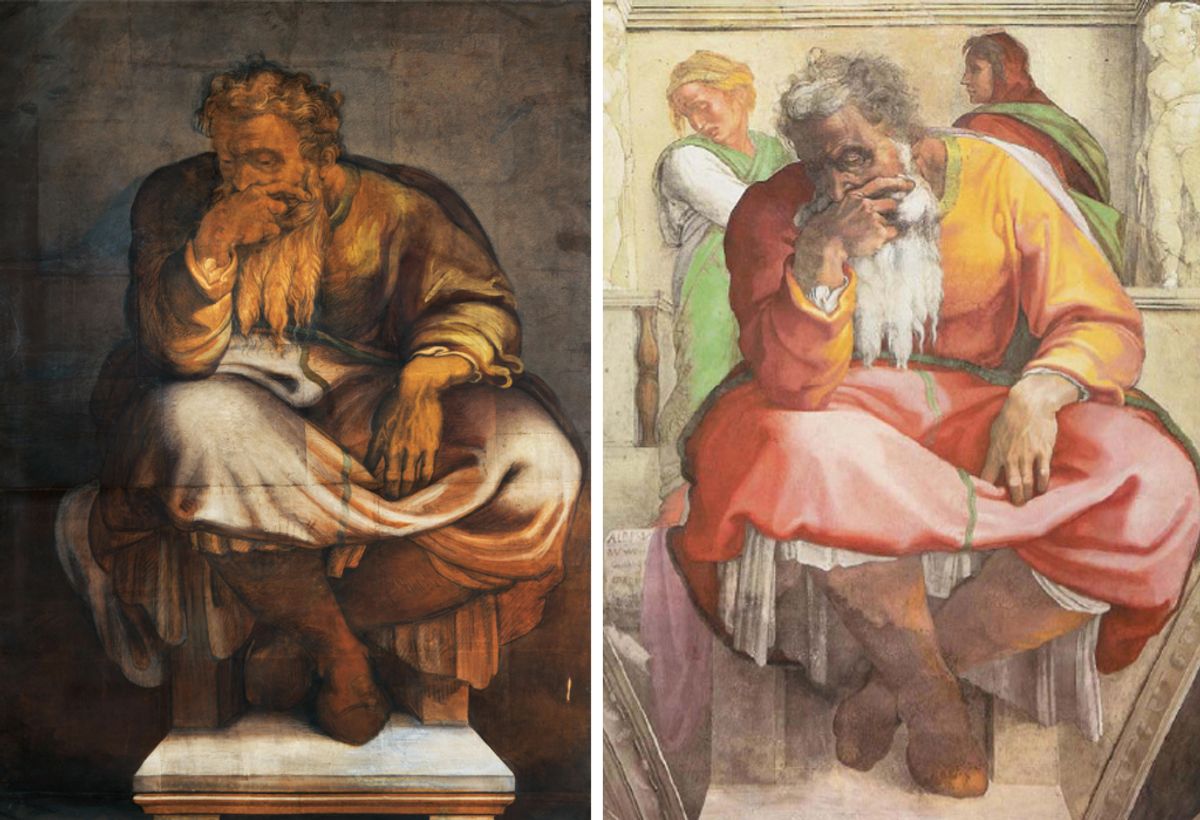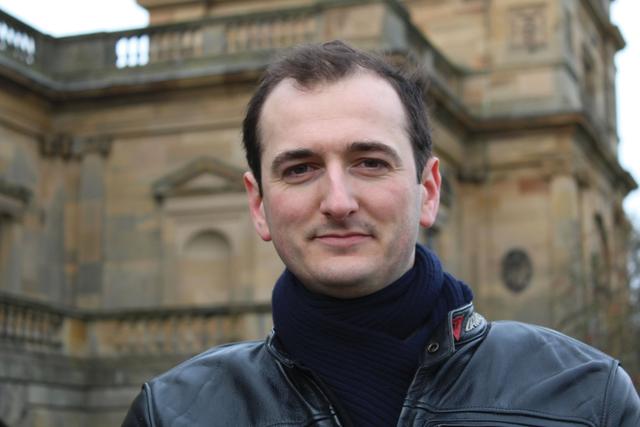There’s no shortage of copies after Michelangelo on offer in Old Master auctions, but the “Follower of Michelangelo” in Dorotheum’s sale in Vienna looked different. For a start, it was enormous, over 2.5m high, and made up of multiple bits of paper. It appeared to be a cartoon, a preparatory work for transferring a design onto a frescoed surface. It was rubbed in parts, but vigorous and confident. It was also part-painted, with big, bold strokes. "Tempera", said the catalogue. Michelangelo painted in tempera. Surely it couldn’t be…
I zoomed in further. The large, bearded figure resting his head on his hand was the prophet Jeremiah from the Sistine Chapel ceiling. He looks gloomily downwards, supposedly mourning the fall of Jerusalem, but the sitter has long been recognised as a self-portrait and is said to reflect Michelangelo’s despondency at being forced to paint the ceiling. And intriguingly, there were differences between Jeremiah in the drawing and in the ceiling; his left hand was placed more to the right, his shoulders were in a different position, as was his gaze, even his feet. Why would a copyist do this?
No large preparatory drawings from the Sistine Chapel survive. But I found that four cartone were discovered in a trunk after Michelangelo died. One was described as a single, life-size male figure. Now I was really getting excited. Was the Dorotheum drawing the one recorded in Michelangelo’s estate? A self-portrait, which is perhaps why Michelangelo decided to keep it? And did I have the chance to buy it for just €6,000?
I booked a flight to Vienna. I told my wife why, and made a case for betting the farm (actually, her farm) on the sleeper of a lifetime. The Dorotheum is one of my favourite auction houses, and I was glad to have an excuse to visit. The beautiful rooms make it the best place in the world for displaying Old Master paintings for sale. Everything looks good, even copies. When I got there, the drawing was hung high up, and I had to make do with a glimpse of Jeremiah’s feet. I know hardly anything about Old Master drawings, but I thought they were good feet.
I came home and carried on researching. The British Museum has one of the four cartone kept by Michelangelo, called The Epifania. The cartoon used to belong to Thomas Lawrence, a significant collector of Michelangelo drawings, who bought directly from Michelangelo’s heirs. Looking into Lawrence’s collection, I found that he had a full-sized copy, in oil, of the Jeremiah by an artist called William Bewick. And then, to my astonishment, I found an image of Bewick’s copy online, and saw that it replicated almost exactly the Dorotheum drawing, including in the ways it differed from Michelangelo’s Jeremiah in the finished Sistine ceiling.
For about a minute I thought I might have cracked it. Did Lawrence own the original drawing, and had it been copied by Bewick? Could I trace the drawing in the Dorotheum all the way back to Michelangelo’s heirs, and was it the one listed in the artist’s inventory?
Of course not. It turns out Lawrence sent Bewick to Rome in 1826 to copy the Sistine Chapel ceiling. Bewick’s letters reveal how he got permission to erect a scaffold and began to make his copies in oil, until one day the Pope complained about the smell of paint. So Bewick decided to make cartoons in Michelangelo’s style, using multiple bits of paper, with odourless tempera. And it was his cartoon now at Dorotheum. The fantasy was over. It sold for €25,000—and not to me.



